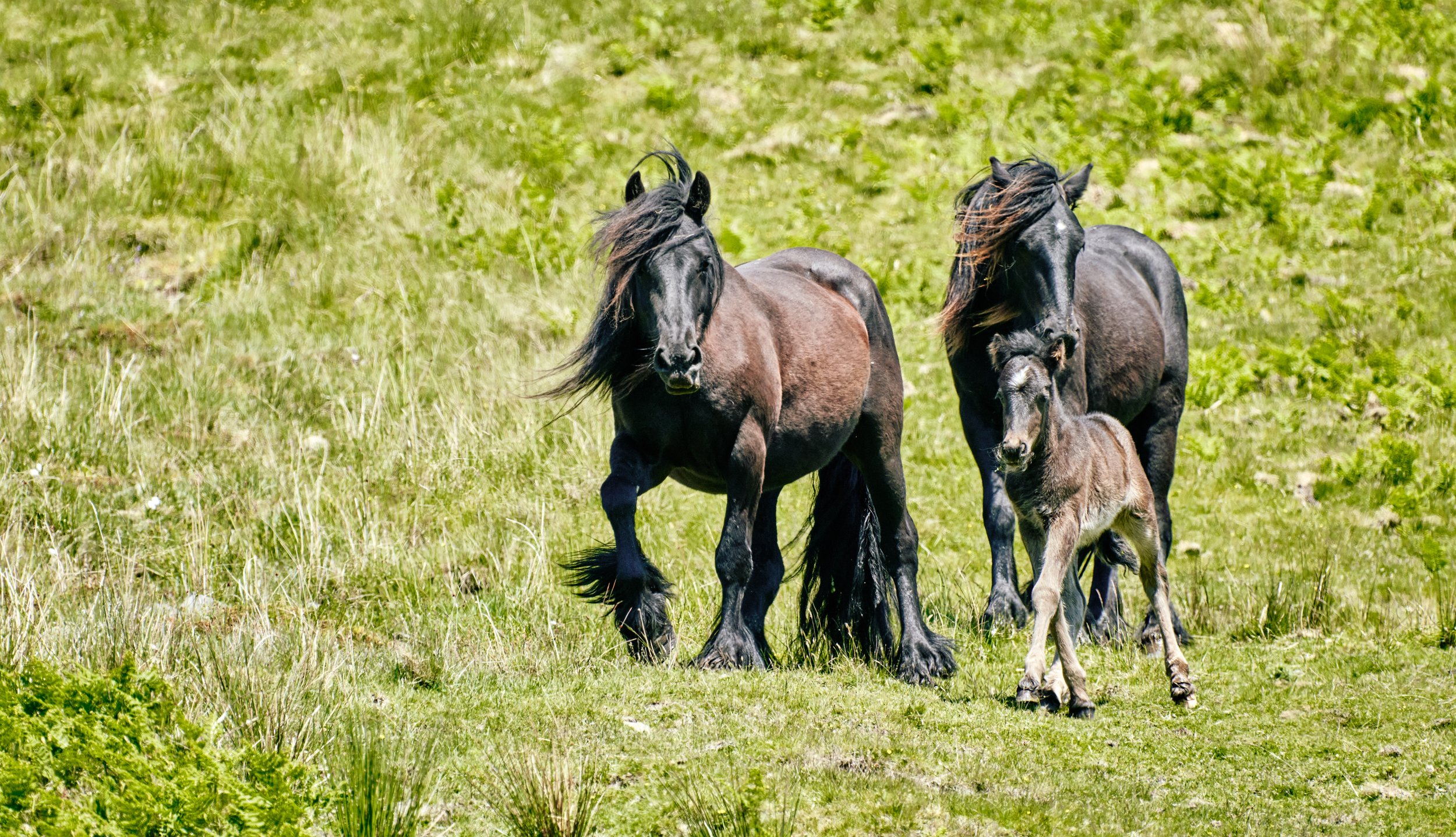
Fell Ponies’ benefits as a conservation grazer:
Ecosystem services that use regenerative land management have improved soil stabilisation and formation, water infiltration, carbon sequestration, nutrient cycling and availability, biodiversity, and wildlife habitat, which then lead to an increased ecosystem and economic stability and resilience.
Ponies continuously grazing on the Cumbrian fells, their natural home and habitat, are free-roaming in the whole designated area (usually enclosed by the typical Fell walls). This type of grazing is the most natural and lets animals and nature coexist and complement each other. It considers the animals’ welfare, happiness and comfort in their habitat and gives them the opportunity of freedom of movement. Besides that, letting the animals continuously graze the land also has much better results in biodiversity. In comparison, rotational grazing produces limited to no improvement in grazing resources.
The Fell Pony as a native British pony breed is the natural counterpart to its traditional upland environment. Regenerative grazing is the best way to demonstrate / highlight the Fell Pony’s importance as an asset that can have a use and job to do in our environmental awareness still today: as conservation grazers. As grazers, they’re collaborating with nature to help preserve and support their own habitat and regenerating the earth’s soil. Using the ponies as grazers will also help their hill breeders keep them on the fells; where they have roamed for centuries and deserve to continue to belong. Without the Fells as their natural habitat, they wouldn’t be Fell Ponies, and their hilly home and the ponies need each other to be preserved for future generations to enjoy.
The Fell Pony as a rare semi wild breed is the ideal grazer because they have been shaped by nature instead of only artificial selection and human intervention for a long time so they are more adapted to nature and know how to survive than fully domesticated equines. Having Fell Ponies as grazers for regenerative grazing would mean conservation for both the land they graze and the ponies as they are now a rare, endangered breed that needs protection.

The Fell Pony - Strengths as a grazer:
Hardiness, good temperament, sure footed, highly intelligent, selective grazers, very adaptable to weather and seasonal changes, under right conditions (right grazing area) can graze all year long with little to no supplementary feeding (mostly only necessary for broodmares and youngstock like foals under severe weather conditions). Their coat is adapted to withstand any kind of weather (some shelter needed like trees or Fell walls and other types of hedges), generally friendly, interested in people but it is necessary to keep a safe distance when seeing these ponies out in their natural environment on the moors and hills, please be aware to not feed them, thank you.
Using ponies as conservation grazers is an important way to preserve excess ponies that are currently not used for breeding (e.g. mares that aren’t broodmares but could eventually be, colts kept entire that could become stallions, youngstock such as geldings and fillies.) These ponies could become an “insurance” in case of catastrophic events to their main founder populations (breeding herds) and to preserve a variety of bloodlines which is essential for the breeds future.
Suitable grazing areas for Fell Ponies: Water access is very important, especially in summer and shade away from flies/insects. A variety of grasses, not too lush, they will eat bracken when brown (and help prevent its spread by trampling on it.)
Fell ponies can graze on: heath and moorland, wet grassland without dangerously deep boggy areas (dry areas in-between necessary)
Size: minimum ratio of ponies to the amount of space (acres/ hectares)
“The common grazing's used for ponies are predominantly in statutory conservation areas where government departments and specific conservation orders e.g. Sites of Special Scientific Interest, may have strong influence on land management policies and, as a consequence, on pony management.”
Ponies in conservation grazing help with increasing organic matter, soil carbon and soil life. Their grazing produces a higher permanent soil cover of litter and plants, which help in reducing soil erosion and increasing net biophysical carbon accumulation. Grazing ponies in regeneratively managed cropping systems can also improve soil organic carbon and soil ecological function and reduce production costs by eliminating the use of annual tillage, inorganic fertilisers and biocides.

How the Trust is able to source ponies:
We can help connect wildlife organisations with breeders and owners to source grazing ponies to suit your projects. To get in contact, please provide your information using the form below and send it to us at: info.fpht@gmail.com
Name of the organisation:
Location:
Contact person at the organisation:
Contract type (loan with care responsibilities for the organisation or owners/ breeders depending on the organisations' location; option of buying the ponies):
Number and age of ponies you're interested in:
Brief description of your project (size in acres, type of environment, length of time, and any other relevant information):


